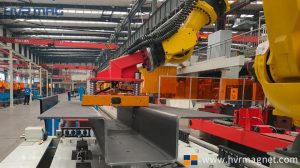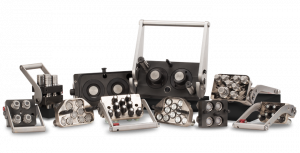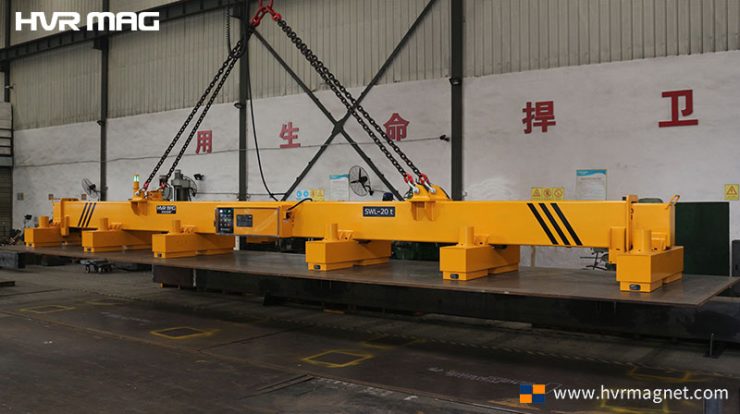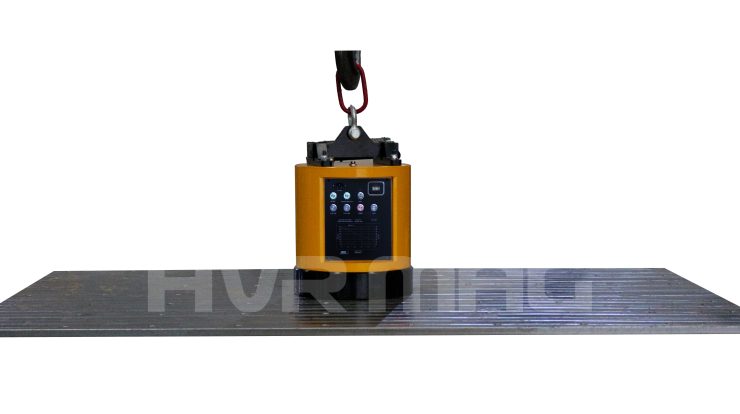End-of-Arm Tooling for Robots

End-of-arm tooling for robots plays a crucial role in enabling robots to interact with objects and perform various tasks. One innovative solution gaining popularity is the magnetic gripper. This article explores the working principle of magnetic grippers and their versatile applications, highlighting their potential to enhance robotic efficiency.
The magnetic gripper utilizes the power of magnets to securely grip and handle objects. The gripper is equipped with permanent magnets or electromagnets, depending on the specific requirements of the application. The design of magnetic end–of–arm tooling for robots ensure a strong and stable grip, allowing the robot to manipulate objects with precision and control. The magnetic force can be adjusted to accommodate different object sizes and weights, providing flexibility in various scenarios.
Key advantages of magnetic grippers in end-of-arm tooling for robots
Non-Destructive Grip: Unlike traditional grippers that rely on physical contact or clamping, magnetic grippers offer a non-destructive grip. They do not exert excessive force or cause damage to delicate objects, making them suitable for handling fragile items or sensitive materials.
Fast and Efficient Operation: Magnetic grippers excel in speed and efficiency, significantly reducing cycle times in robotic operations. The magnetic attraction enables quick and seamless grasping and releasing of objects, optimizing overall productivity.
Versatility in Object Handling: Magnetic grippers can handle a wide range of objects, including ferromagnetic materials such as steel, iron, and nickel. They are adaptable to various shapes, sizes, and weights, making them suitable for applications with diverse object requirements.

Applications of Magnetic Grippers
Manufacturing and Assembly: Magnetic grippers find extensive use in manufacturing and assembly processes. They enable robots to pick up and manipulate metal components, such as machine parts, automotive components, or electronic devices. The non-contact grip ensures precise placement and avoids potential damage.
Warehouse and Logistics: In warehouse and logistics environments, magnetic grippers streamline material handling tasks. They can efficiently handle ferromagnetic containers, boxes, or packages, facilitating sorting, stacking, and palletizing operations. The fast and reliable grip enhances overall operational efficiency.
Recycling and Waste Management: Magnetic grippers contribute to efficient recycling and waste management processes. They are utilized to separate and handle ferrous materials from mixed waste streams, improving sorting accuracy and enhancing the recycling rate.
How to choose from types of magentic gripper?
Finally, how should we choose the type of magnetic gripper? Conventional permanent magnets are usually pneumatically controlled when made into robot grippers. But they cannot be adjusted for magnetic strength and range. Electromagnets can adjust magnetic strength and be controlled automatically. But they consume a lot of power and are prone to heat and damage, resulting in high power and maintenance costs over time. Electric permanent magnets are more expensive. But they are as energy efficient and safe as permanent magnets and can be intelligently controlled like electromagnets. It is a highly recommended choice.
In short, the magnetic gripper in end-of-arm tooling for robots is revolutionizing various industries by providing a reliable, non-destructive, and efficient solution for object handling. Its working principle, based on magnetic attraction, ensures a secure grip on ferromagnetic objects, enabling robots to perform diverse tasks with precision. With applications ranging from manufacturing and logistics to recycling, magnetic grippers are enhancing robotic efficiency and contributing to streamlined operations across multiple sectors.
As a manufacturer of electro-permanent magnetic grippers, HVR MAG has realised industrial automation solutions for many customers. Feel free to contact us.



